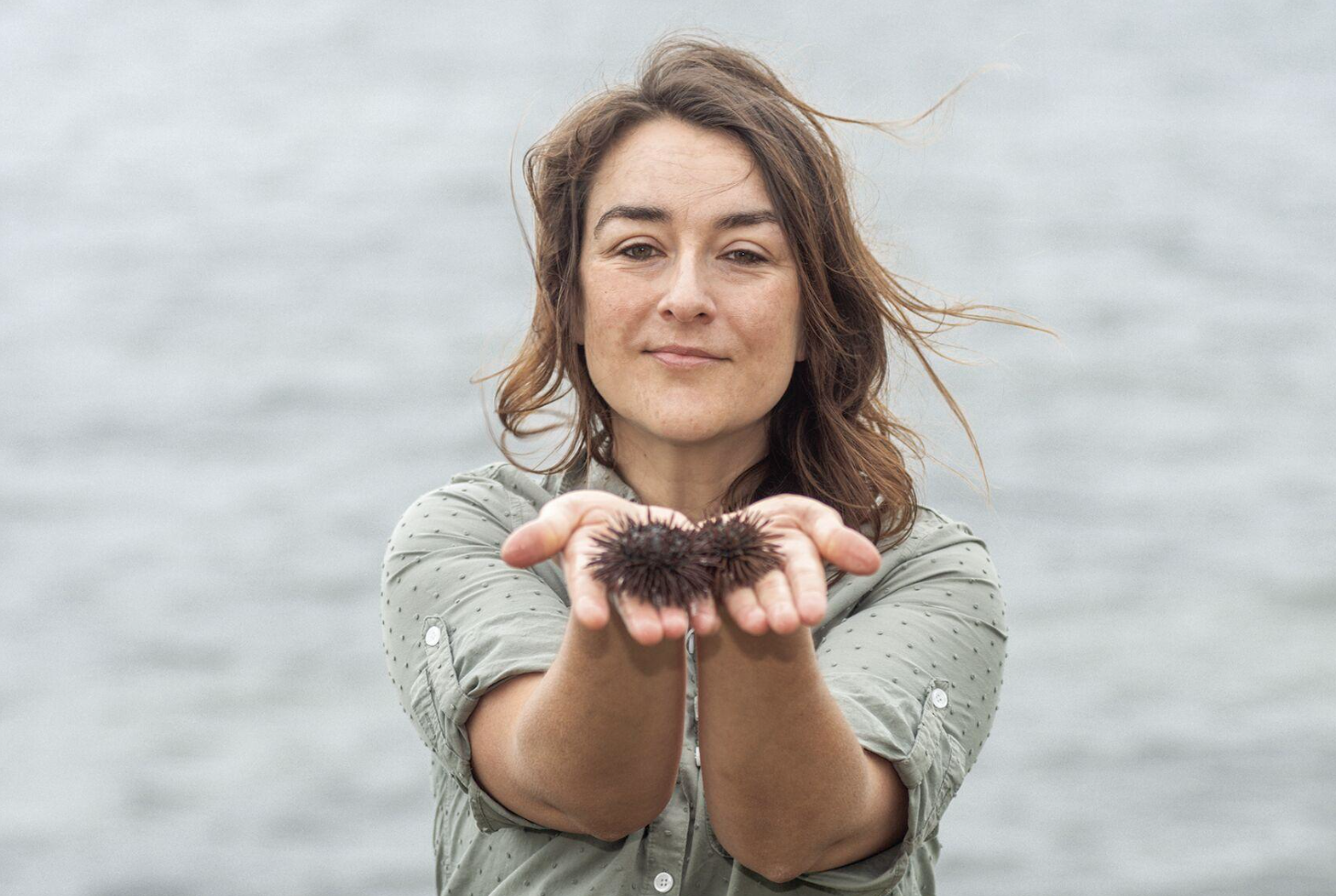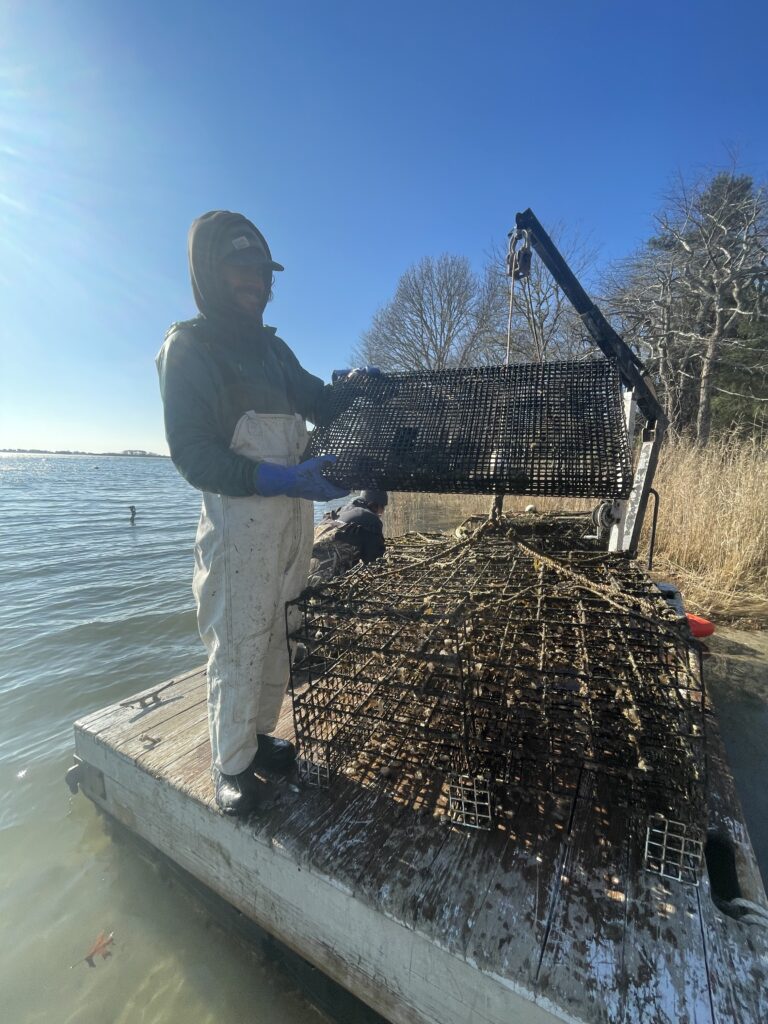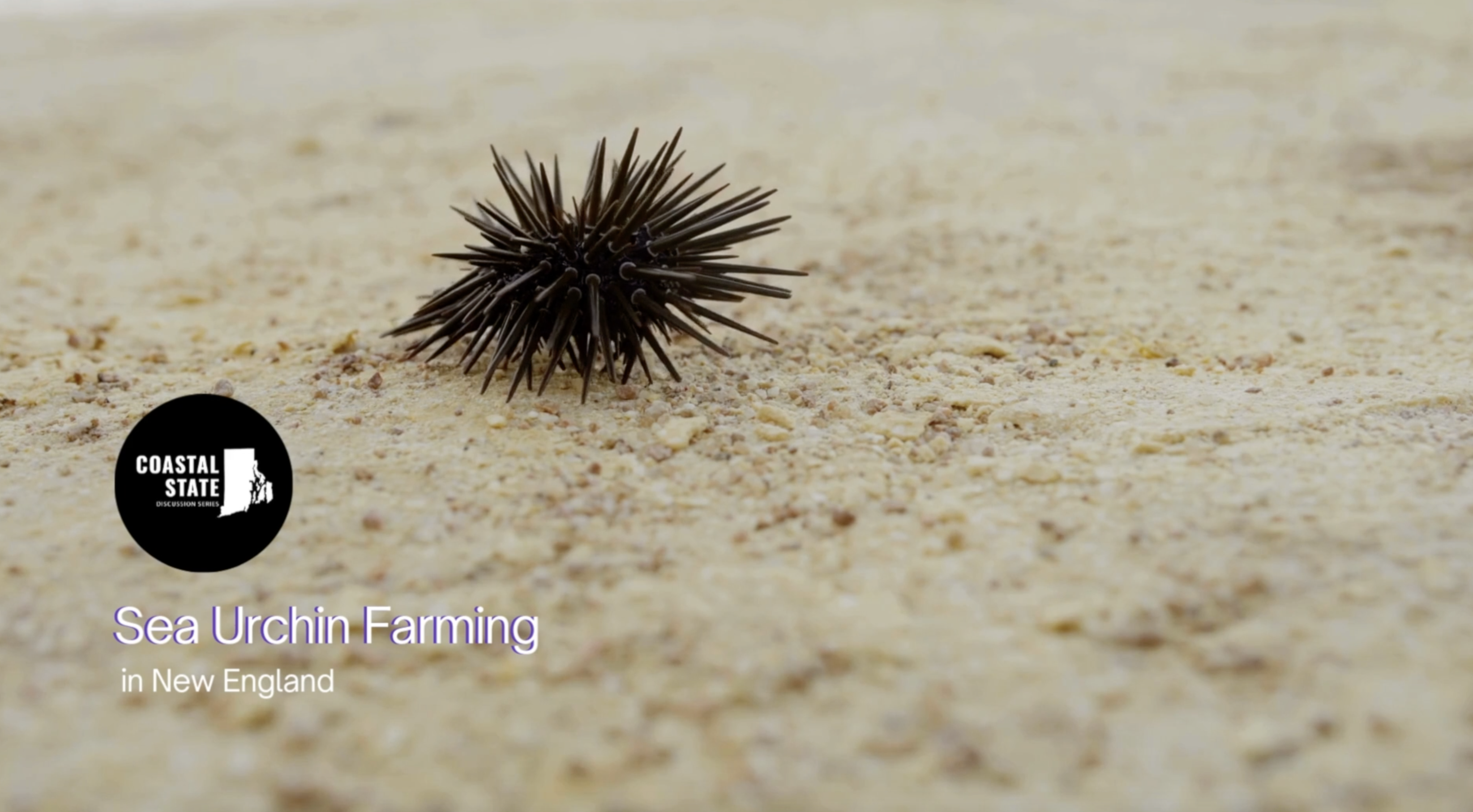With the global prices for sea urchin roe, known as “uni,” reaching up to $60 per pound, the aquaculture industry is increasingly looking to sea urchin farming as a profitable product. Rhode Island’s shellfish and kelp farmers are among those exploring the potential of farming these “porcupines of the sea” to meet the demand in U.S. and Asian markets. As wild sea urchin stocks face overfishing and habitat loss pressures, sustainable farming practices are essential to protect these valuable populations and support a viable industry.
THEY’RE AN ECOLOGICAL AND ECONOMIC OPPORTUNITY

Dr. Coleen Suckling. Photo: Michael Derr | South County life
“Sea urchins are not just a seafood product; they’re an ecological and economic opportunity,” said Dr. Coleen Suckling, a Marine Eco-Physiologist & Associate Professor of Aquaculture/Fisheries at the University of Rhode Island, during a recent Coastal State event hosted by Rhode Island Sea Grant.
Suckling’s research spans running hatcheries, integrating sea urchins with salmon and kelp to reduce aquaculture’s environmental footprint, and developing specialized feeds for sea urchin farming. She was joined by Dana Morse of Maine Sea Grant and the University of Maine to discuss the latest research and initiatives driving the growth of sea urchin aquaculture in New England.
The Path from Hatchery to Farm
The hatchery process for sea urchins is a cornerstone of sustainable farming. Suckling discussed fertilization and feeding methods that allow researchers to manage reproduction carefully and ensure a steady supply of juveniles.
One of the significant hurdles in urchin aquaculture is achieving high settlement success rates for juveniles. Suckling and her team achieved a breakthrough through a collaborative research project by using a new medium to promote settlement and growth. “By introducing biofilm and macroalgae diets, we’ve improved settlement rates to 80-90%, ensuring [juveniles] are strong enough to survive the transition to farm systems,” she said. With high survival rates, deployment-ready juveniles measuring 10-15 mm are suitable for various aquaculture gear systems, including on-bottom systems and suspended structures like lantern nets, she added.
Success in the hatcheries will help overcome one of the primary limiting factors for sea urchin aquaculture, noted Morse. “If you don’t have the seed, you can’t get started. It’s one of the biggest hurdles in getting this industry to move forward.”
The only operational seed supplier for green sea urchins in the New England region is the Center for Cooperative Aquaculture Research (CCAR) Hatchery at the University of Maine. None currently exist for purple urchins that are more native to Rhode Island and tolerant of warmer waters.
“The hope is that over time, we’ll see a commercial expansion of hatcheries,” said Morse. “There’s a fair bit of interest … and pretty good potential for private seed available soon.”

Integrating Sea Urchins into Polyculture Systems
Researchers and aquaculturists in Maine and Rhode Island are experimenting with integrating sea urchins with scallops, oysters, and kelp. The idea is to use sea urchins to reduce biofouling (unwanted algae growth) on gear to improve water flow and reduce the time and cost associated with cleaning and general maintenance.
Suckling pointed to a study led by RI Sea Grant Fellow Brendan Elba, who found that when sea urchins were placed in compartments alongside scallops, the biofouling was significantly reduced compared to control compartments. This can reduce labor costs and improve overall farm productivity, she said.
“Brendan Elba’s research is investigating optimal stocking densities and size classes for polyculture systems to address biofouling challenges on aquaculture gear … It’s really shown a really positive outcome.” said Suckling, emphasizing the importance size class of sea urchins compared to shellfish. “As long as the shellfish are large enough, the urchins can graze on the surface…without any negative effects on those aquaculture species.”

Elba in the field testing how sea urchins interact with caged oysters.
Similar results were found in another case study with Quonnie Siren Oyster in Quonochontaug Pond.
“You can see a real potential in the future where urchins could help with biofouling, and there’s some parallels between urchins and oysters, especially in terms of gear maintenance and sustainability.”
Overcoming Challenges
While sea urchin aquaculture’s potential economic and ecological benefits are clear, challenges remain. Seed supply is a critical bottleneck, with hatchery-raised juveniles still in limited production, as are efforts to scale operations and reduce barriers to market entry. Educational initiatives and knowledge-sharing among growers, researchers, and regulators are essential to overcome these barriers.
Morse highlighted the importance of international collaboration: “There is so much expertise outside the U.S. It’s a quick way to jumpstart industry development and bring proven techniques to local waters.”
A Bright Future for Sea Urchin Farming
The convergence of cutting-edge research, market demand, and industry interest paints a bright future for sea urchin aquaculture in New England. The region can lead the way in sustainable seafood production by fostering collaborations and investing in education and infrastructure.
As Suckling and Morse noted, sea urchin aquaculture is about meeting consumer demand and building a resilient, environmentally responsible industry. With continued innovation and support, these “porcupines of the sea” may soon become a staple of New England’s aquaculture landscape, supporting livelihoods and sustainable practices for years.
“The Northeast is well-positioned to become a leader in sustainable sea urchin farming,” said Morse. “By leveraging existing infrastructure and expertise in shellfish aquaculture, we can build a thriving industry that supports local communities and ecosystems.”
Coastal State Discussion Series
The Coastal State Discussion Series is a forum dedicated to highlighting current scientific research focused on marine issues impacting Rhode Island coastal communities and environments.
–By Meredith Haas, Research Communications & Digital Media Manager

